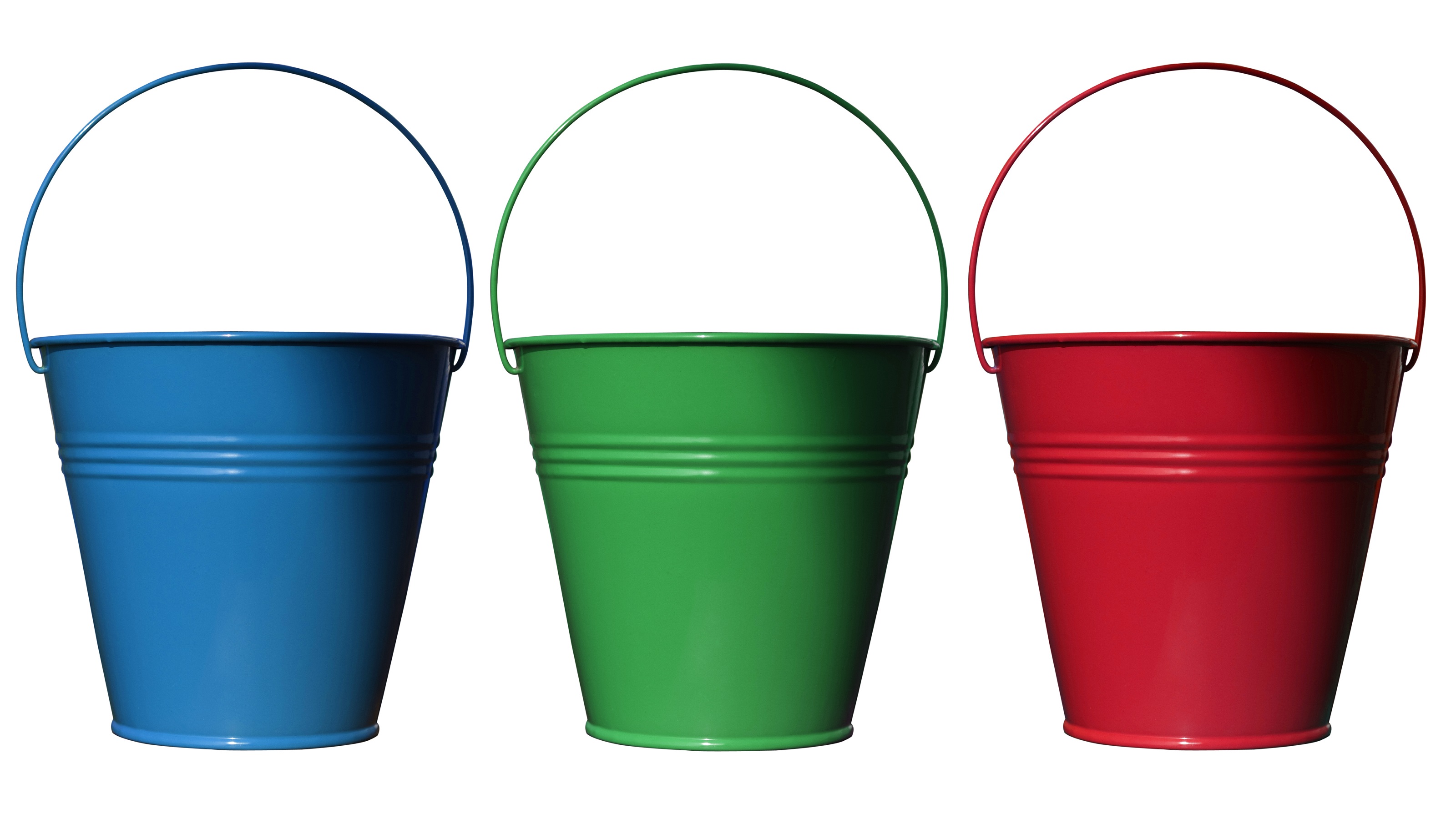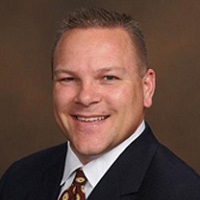Secure Your Retirement Paycheck: The Power of Three Buckets
Putting all of your nest egg in one basket is risky. Try putting it in three buckets for short-term, medium-term and long-term needs instead.


If you’re feeling whiplash these days when you check your investment accounts, you’re not alone.
Although the stock market has generally climbed higher in the past few years, we all can agree that it’s been a roller-coaster ride — especially for soon-to-be retirees who expect to regularly draw a chunk of their income from a stock-market-heavy portfolio.
If that’s you, you may want to consider these extreme highs and lows as a reminder that retirement planning isn’t just about making money. It’s also about protecting what you’ve worked so hard to build, because most of us have only one shot at getting retirement right. And you can’t overlook the damage negative stock market returns can do to the longevity of your nest egg as you begin taking distributions from your investment accounts.

Sign up for Kiplinger’s Free E-Newsletters
Profit and prosper with the best of expert advice on investing, taxes, retirement, personal finance and more - straight to your e-mail.
Profit and prosper with the best of expert advice - straight to your e-mail.
Don’t get me wrong. If the market dips or dives while you’re still working, it’s not fun. But you’re more likely to recover from a big loss — even though it may take a while — because you’re not pulling money out of your accounts and you’re still putting money in.
A volatile market is far more dangerous when you start to take withdrawals.
Financial professionals call this potential peril sequence of returns risk, and what it boils down to is this: If negative returns occur in the first years of your retirement, and you need to sell some of your holdings to get the income you require, there’s a good chance you’ll have to sell more shares because you’ll be selling at a lower price. That means you may not have enough shares left in your prematurely drained portfolio to take advantage of positive returns when they occur in the future.
It’s the timing that matters. And, unfortunately, we can’t predict what the market will do in the years just before and after your retirement date.
How much income do you need?
So, what can you do to protect your retirement paycheck and expected retirement lifestyle?
Let’s say you’ve done the math, and you have an idea of how much income you’ll need to live comfortably in retirement. You’ve added up the income streams you know you can count on — your pension and/or Social Security benefits (and your spouse’s benefits, if you’re married). And you’re close to the amount you think you’ll need. But a gap remains that you’ll have to fill each month.
Here’s how that works out for Bob and Mary Smith, a hypothetical couple in their 60s who have saved $1.1 million and are dividing the money into three different buckets.
Based on what they’re living on now and the things they want to do when they’re no longer working, the Smiths expect they’ll need $10,000 a month in retirement income.
Together, they have about $7,000 in guaranteed monthly income from pensions and Social Security. But they’ll need an additional $3,000 each month, indexed to 3% inflation, to cover their retirement income gap. They don’t want to adjust that amount and take less if the market isn’t doing well. But they also don’t want to deplete their savings by selling at a loss if there’s a correction.
Strategies that can help
Fortunately, there are strategies that can help savers shield their portfolio from bad retirement timing. One that can work well for savers who are in or near retirement is to separate and rebalance their assets into three “Savings Buckets”:
Bank/short-term ($100,000 in the Blue Bucket). The money in this bucket is for immediate income needs, so it’s best to keep it in low-risk, liquid investments, such as checking and savings accounts. The money in the short-term bucket can be used to cover unexpected expenses — or an ill-timed market dip — so you don’t have to sell stocks at a loss to get the funds you require.
Protected income/medium-term ($500,000 in the Green Bucket). This is the bucket you’ll mostly rely on to get through the first 10 to 15 years of retirement. You’ll want to use accounts that can provide safety and dependable income, but also grow your money at a higher rate than the money in the “bank” bucket. Several options are available. The first is a money market account. This may work for a few but often disappoints due to low rates of return. Also, we want this bucket to provide you with about 10 to 15 years of income while you spend this entire bucket down to a designed zero balance. (This will be explained.)
The second option is using a fixed or fixed index annuity (with no management fees). This may be a better choice for those folks who want to participate in some of the upside growth of a stock market index, such as the S&P 500, while having their principal guaranteed. The money in the protected income bucket is designed to protect your principal while providing you with an income for the next 15 years or so in this example. This in turn does two things.
Number one, it helps you avoid the risk and anxiety of running out of money prematurely in retirement because the first 15 years of income are planned for. Number two, it buys us time to let the money in our Stock Market Bucket sit untouched for 15 years or more so that we don’t have to worry about short-term stock market fluctuations. After this period, we would take a chunk from the growth bucket and dump it again into the Protected Income Bucket.
Stocks/growth/long-term ($500,000 in the Red Bucket). Think of this bucket as your retirement plan’s fountain of youth. You’ll use it to keep growing funds for the future and to replenish the other two “safer” buckets when necessary.
Your age and risk tolerance will help you decide what investments will work best here, but growth stocks, small-cap stocks, emerging market stocks, high-yield bonds and index funds are common choices.
Ultimately, it’s up to each retiree (hopefully with the help of a financial adviser) to determine how much to put in each bucket and what to invest in. With this strategy, the medium-term option (Green Bucket) typically gets the portion necessary to provide you with 15-plus years of income indexed for inflation, but your percentages may depend on several factors, including your legacy goals.
If you’re closing in on retirement (five or even 10 years out) and your portfolio is still focused on accumulation, it’s time to talk to a financial adviser about changing your priorities to wealth preservation while looking at distribution. Your money can and should keep growing. But it should be invested in a way that doesn’t put your retirement — or your stress level — at risk.
Kim Franke-Folstad contributed to this article.
The appearances in Kiplinger were obtained through a PR program. The columnist received assistance from a public relations firm in preparing this piece for submission to Kiplinger.com. Kiplinger was not compensated in any way.
This is for informational purposes only and is not intended to be a solicitation for or offering of any product or investment. The offer for sale of an insurance product may only be conducted in a state where the agent is licensed and the product is approved for sale. The providing of investment advice relating to securities may only be done by a properly licensed individual operating through a licensed affiliate entity, unless otherwise exempt. Comments about past performance are not to be construed as a guarantee or assurance of future performance. This website may contain concepts that have legal, accounting and tax implications. We do not provide specific legal or tax advice, nor promote, market or recommend any tax plan or arrangement. Consult a tax/legal professional for guidance with your individual situation. No representations are made as to the accuracy or completeness of the information contained herein or any information contained in any link provided herein, nor does a consumer visiting the website create an agent-client relationship.
Past performance is not indicative of future results. Hypothetical performance results have many inherent limitations. No representation is being made that any account will or is likely to achieve profits or losses similar to those shown. Forward-looking statements are not guarantees of future performance and involve risks, uncertainties, and assumptions that are difficult to predict. Actual outcomes may vary. Investing in emerging markets involves unique risks, including currency fluctuations, political instability, and market volatility. High-yield bonds involve a higher risk of default and price volatility compared to investment-grade bonds.
Pete Tychsen, an Investment Adviser Representative (IAR), offers advisory services through Gibbs Wealth Management (GWM), an SEC Registered Investment Adviser. The firm only transacts business in states where it is properly registered or is excluded or exempted from registration requirements. Preservation Financial Group and Gibbs Wealth Management are independent of each other. Insurance products and services are not offered through GWM but are offered and sold independently by Preservation Financial Group, Pete Tychsen, License #A269903 (FL), #3000456732 (AL), #446503 (GA), #2426336 (TN), #402223 (NC, SC, & OR).
Want more guidance on retirement savings? Sign up for Kiplinger's six-week series, Invest for Retirement.
Related Content
Get Kiplinger Today newsletter — free
Profit and prosper with the best of Kiplinger's advice on investing, taxes, retirement, personal finance and much more. Delivered daily. Enter your email in the box and click Sign Me Up.

As president and owner of Tallahassee-based Preservation Financial Group, Pete Tychsen is passionate about helping clients protect, grow and balance their retirement assets. Though he takes his duties as a licensed financial adviser and licensed insurance agent seriously, he also tries to educate his clients, and future clients, in a fun and engaging way. Pete’s practice, which he opened in 1996, focuses on IRA and 401(k) distribution, tax strategies, asset protection and retirement income planning.
-
 Stock Market Today: Trump Retreats, Markets Rejoice
Stock Market Today: Trump Retreats, Markets RejoiceStocks rally, yields soften, the dollar rises, and even beaten-down names enjoy the wages of potential trade peace.
By David Dittman
-
 In Trump’s Economy Should 401(k) Savers 'Set It and Forget It?'
In Trump’s Economy Should 401(k) Savers 'Set It and Forget It?'It’s hard to bury your head in the sand when the markets are volatile. Here’s when it makes sense and when it doesn’t.
By Donna Fuscaldo
-
 Stock Market Today: Trump Retreats, Markets Rejoice
Stock Market Today: Trump Retreats, Markets RejoiceStocks rally, yields soften, the dollar rises, and even beaten-down names enjoy the wages of potential trade peace.
By David Dittman
-
 I'm 50 and My Home Is Worth $5 Million. Can I Retire Now?
I'm 50 and My Home Is Worth $5 Million. Can I Retire Now?It may be oh-so tempting to cash out your upscale home and leave work for good. But should you? We ask the experts.
By Maurie Backman
-
 Tesla Stock Pops as Elon Musk Promises DOGE Draw Back
Tesla Stock Pops as Elon Musk Promises DOGE Draw BackTesla reported a sharp drop in first-quarter earnings and sales, as the EV maker suffered a backlash to its CEO's political ambitions.
By Karee Venema
-
 Bouncing Back: New Tunes for Millennials Trying to Make It
Bouncing Back: New Tunes for Millennials Trying to Make ItAdele's mournful melodies kick off this generation's financial playlist, but with the right plan, Millennials can finish strong.
By Alvina Lo
-
 Early-Stage Startup Deals: How Do Convertible Notes Work?
Early-Stage Startup Deals: How Do Convertible Notes Work?Some angel investors support early startups by providing a loan in exchange for a convertible note, which includes annual interest and a maturity date.
By Murat Abdrakhmanov
-
 Stock Market Today: Stocks Soar on China Trade Talk Hopes
Stock Market Today: Stocks Soar on China Trade Talk HopesTreasury Secretary Bessent said current U.S.-China trade relations are unsustainable and signaled hopes for negotiations.
By Karee Venema
-
 How Can Investors Profit From AI's Energy Use?
How Can Investors Profit From AI's Energy Use?Global energy demand is expected to grow by leaps and bounds over the next several years as AI usage accelerates. Here's how to get a piece of the pie.
By Jacob Schroeder
-
 Americans Are Retiring Later: Will This Trend Last?
Americans Are Retiring Later: Will This Trend Last?Given a host of pressures to keep working, Americans are retiring later in life. Will regulatory and economic forces encourage you to work longer?
By Christy Bieber